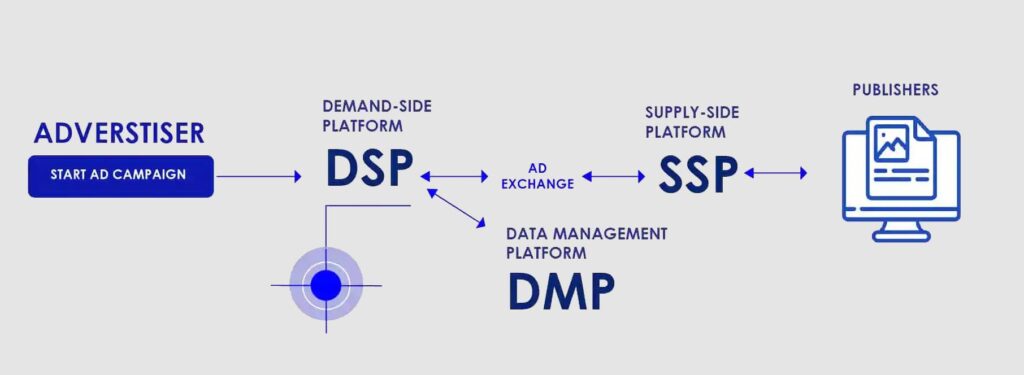
In these articles, we explore the basics of ad-tech to give you a good understanding of how advertising works in the fast-changing world of online content. Ads bring in a lot of money for content makers and publishers, especially in the OTT industry.
What is Video Player-Ad Interface Definition (VPAID)
The Video Player-Ad Interface Definition (VPAID) is a standard protocol that defines the communication between ad units and video players. It allows interactive rich media ads to be played within video players that support the VPAID standard. VPAID enables ad developers to create engaging and interactive video ads that can dynamically change based on user interaction or other factors. This standard facilitates the integration of various ad formats and provides a standardized way for advertisers to measure ad performance and user engagement.
What is Open Measurement Interface Definition (OMID)
The Open Measurement Interface Definition (OMID) is a standard developed by the IAB (Interactive Advertising Bureau) to facilitate third-party measurement of mobile in-app ads. OMID enables advertisers and ad measurement providers to gather consistent and accurate data about ad viewability, verification, and other metrics across different mobile apps and platforms. By implementing OMID, app developers can offer advertisers greater transparency and confidence in the measurement of their ad campaigns, ultimately enhancing trust and accountability within the mobile advertising ecosystem.
What is Secure Interactive Media Interface Definition (SIMID)
The Secure Interactive Media Interface Definition (SIMID) is a standard developed by the IAB Tech Lab to enable secure and interactive video ad experiences across various platforms and devices. SIMID facilitates the communication between video players and interactive ad units, ensuring that interactive elements within video ads are executed in a secure and standardized manner. This standard helps advertisers create engaging and immersive video ad experiences while maintaining security and compatibility across different environments. By adhering to SIMID, advertisers can deliver interactive video ads with confidence, knowing that they will work seamlessly and securely for viewers.
this article is in draft mode. please visit soon.
What is VAST and VPAID? The world of digital advertising is filled with ad tech jargon like VAST and VPAID. If you want to run video ads, you’ll need to understand what they are. Serving advertisements into video players is different than serving them into websites. This is why VAST was created. Vast is an acronym for Video Ad Serving Template. Created by the IAB, VAST is a script that gives video players information about which ad to play, how long it should show, and whether users can skip the video ad or not. This is done with XML, which contains information about the type of ad, where the ad creatives are located, and events to occur when certain things happen, and much more. So why is VAST important? In today’s marketplace, the number of platforms where video content is placed on have increased and is increasingly becoming more complex as well. Think about all the different screen sizes on different devices, various connection speeds, different video players and ad servers. Vast provides a common protocol that enables ad services to use a single ad response format across the many different publishers and video players. It plays a crucial role in the simplification and monetization of in-stream video advertising.
It tells the player which ad to play, how should the ad show up, how long it should last, and whether the viewers can skip it, where to find the ad, what the click-through URL should be, and more. Vast VAST tag comes in many versions. The latest version is VAST 4.0, which most importantly, was updated that it addresses viewable impressions, standardizing viewable tracking. While VAST 4.0 is already released, many publishers are still on VAST 2.0. Vast tag, however, is backward compatible, so you don’t have to worry about compatibility issues. In conclusion, VAST is important because it enables video players and ad servers to speak the same language.



